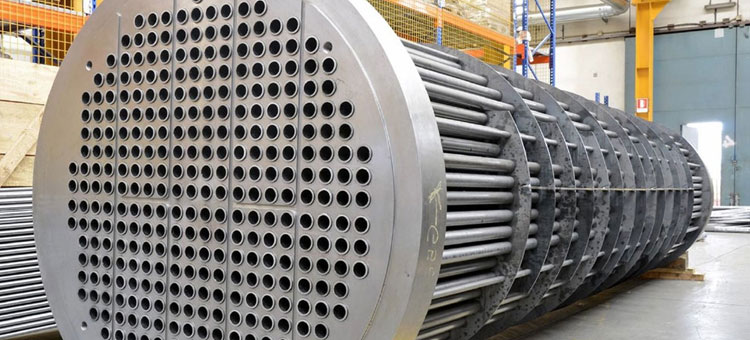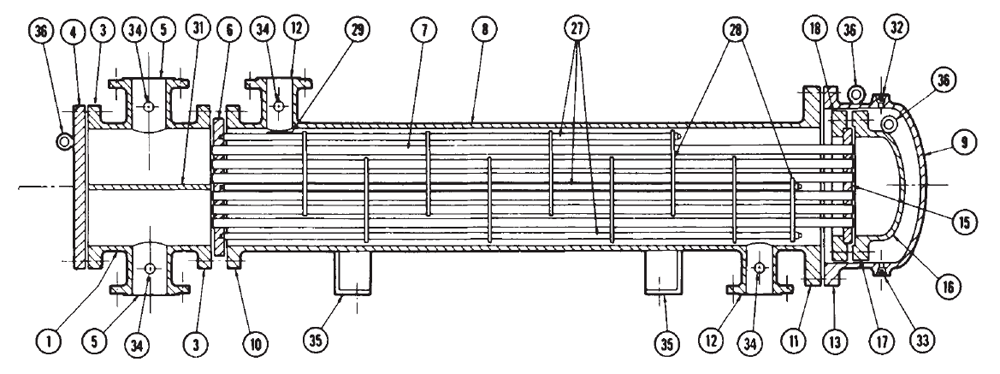Materials: 316 Stainless Steel
Application Temperature Range: Up to 500°C
Pressure Ratings: Varies based on design and application, often up to 100 bar
Heat Transfer Area: Varies depending on the model
Tube or Plate Configuration: Customizable based on operational needs
In the field of industrial heat exchange, corrosion-resistant materials are crucial for the longevity and efficiency of equipment. The 316 stainless steel heat exchangers and condensers provide an excellent solution for environments that require superior resistance to corrosion, high temperatures, and chemical compatibility. This makes them ideal for a wide array of applications across chemical processing, power generation, pharmaceuticals, and food industries.
316 stainless steel, with its high chromium, nickel, and molybdenum content, is particularly suited for environments with significant exposure to chlorides and aggressive chemicals. This alloy's properties ensure efficient heat transfer and resilience against scaling or contamination, making it indispensable for processes requiring consistent and clean temperature control.

The 316 stainless steel heat exchanger and condenser are engineered with precision to withstand high temperatures, pressures, and corrosive media. They come in various designs, including shell-and-tube, plate, finned tube, and coil types, each suited for different operational needs. The 316 stainless steel construction provides the strength and resistance needed for long-term service, even in the harshest industrial environments.
Shell-and-Tube: This design involves a series of tubes inside a cylindrical shell. The working fluid passes through the tubes while the secondary fluid surrounds them. This versatile design handles a wide range of pressure and temperature differentials.
Plate: Thin plates stacked together create a large surface area for heat exchange between fluids. Plate heat exchangers are excellent for processes requiring efficient heat transfer in a compact footprint.
Finned Tube: Fins attached to the tubing increase surface area and thus heat transfer efficiency. They are ideal for gas-to-liquid applications and situations where space is limited.
Coil: A series of coils carry the working fluid through a secondary fluid medium. Coiled designs are beneficial for indirect heating and cooling, especially where high turbulence is required.
Corrosion Resistance: 316 stainless steel resists corrosion in acidic, chloride-rich, and high-temperature environments.
Temperature Tolerance: Suitable for high-temperature applications, up to 500°C.
Pressure Ratings: Capable of handling high-pressure systems, up to 100 bar.
Hygienic Construction: Smooth surfaces prevent contamination and fouling, ideal for pharmaceutical and food industries.
Customization: Flexible design configurations (shell-and-tube, plate, finned tube, coil) to match specific operational requirements.
Operational Efficiency: High heat transfer efficiency due to excellent thermal conductivity and customizable design.
Durability: Resistant to thermal cycling and pressure variations, providing reliable performance and longevity.
Easy Maintenance: Designed for easy access and cleaning to minimize downtime.
Chemical Compatibility: Suitable for a broad range of chemicals, including acids and alkalis, making them versatile for various industries.
Sustainability: Stainless steel is fully recyclable, contributing to environmental sustainability.

Primary Construction: 316 stainless steel (chromium 16-18%, nickel 10-14%, molybdenum 2-3%)
Gaskets: Non-asbestos, PTFE, or other compatible materials
Fittings: Stainless steel or corrosion-resistant alloys
Temperature: Up to 500°C
Pressure: Up to 100 bar (customizable based on design)
Tube Size (Shell-and-Tube): From 0.5 to 2.5 inches (outer diameter)
Plate Size: Varies based on model and application
Fin Spacing (Finned Tube): 3-12 fins per inch
Flow Control Valves: Stainless steel control valves to optimize fluid flow and efficiency.
Mounting Brackets: Customizable mounting systems for stable installation in various environments.
Insulation: Heat-resistant insulation materials for maintaining optimal temperature control and preventing heat loss.
Monitoring Sensors: Temperature and pressure sensors compatible with heat exchanger systems.
316 stainless steel heat exchangers and condensers are used across various industries due to their adaptability and superior performance:
1.Chemical Processing: Ideal for handling aggressive chemicals, acids, and alkalis in heat recovery and process heating applications.
2.Pharmaceutical: Ensures consistent, sterile temperature control in drug manufacturing, fermentation, and purification processes.
3.Food and Beverage: Maintains safe and hygienic temperature control for pasteurization, sterilization, and brewing.
4.Power Generation: Facilitates efficient steam condensation and heat recovery in power plants.
5.HVAC and Refrigeration: Enables precise temperature control in large-scale heating, ventilation, and cooling systems.
6.il and Gas: Handles the temperature regulation of hydrocarbons, sulfur compounds, and other challenging chemicals in refining and processing.
Answer: 316 stainless steel provides exceptional resistance to chloride-induced corrosion and chemical attack due to its high chromium, nickel, and molybdenum content. It is also highly resistant to scaling and fouling, ensuring optimal heat transfer and reduced maintenance.
Answer: Selection depends on the temperature range, pressure ratings, fluid compatibility, and available space. Shell-and-tube is versatile for a broad range of needs, while plate heat exchangers offer compact efficiency. Coil and finned tube types are ideal for specific heat exchange needs.
Answer: Regular inspections for fouling or scaling should be performed, with cleaning scheduled as needed. Plates and tubes should be checked for leaks, and gaskets and seals should be replaced periodically.
Answer: With proper maintenance, 316 stainless steel heat exchangers and condensers can last for decades, thanks to their corrosion resistance and durable construction. Specific service life will depend on the application and operating environment.
Answer: Yes, custom designs can be produced to match specific application requirements, from size and configuration to pressure ratings and chemical compatibility. Our engineers can provide tailored solutions to meet your operational needs.
Phone:+86-15716151880
Email:[email protected]
Company:BEANT
Address:No. 28, Luoshen Road, Luoshe Town, Huishan District, Wuxi City, Jiangsu Province
